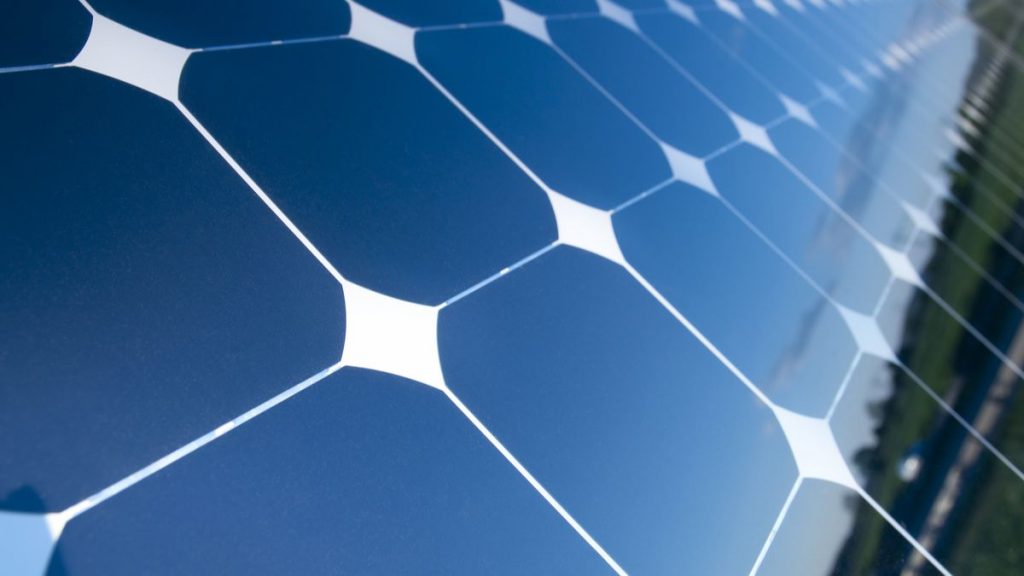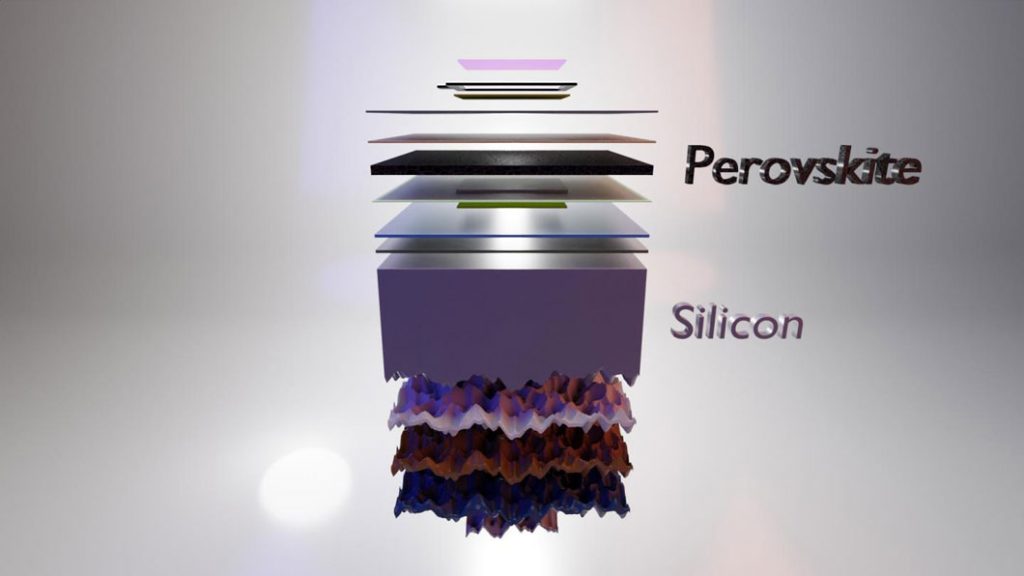
German researchers recently unveiled a hybrid solar cell achieving record efficiency. Combining perovskite and silicon, the approach promises to propel the industry to new heights.
Hybrid cells less expensive and much more efficient
Crystal known to scientists for more than a century, the perovskite was only integrated into solar cells in 2009. Since then, devices using it have steadily improved, with nominal laboratory efficiency rising from 3.8% to nearly 20%. In the context of work recently presented in the journal Science, a team of Helmholtz-Zentrum Berlin (HZB) went even further, by coupling perovskite with silicon in a hybrid solar cell with an impressive 29.15% efficiency.
In a solar cell, when photons come into contact with the semiconductor material and their energy ” grave ” in his forbidden band, an electron is then shifted, leaving a vacuum in the atom. The electron then moves from atom to atom within the material, each time leaving a hole behind and occupying spaces downstream until it finally reaches an electrode and its charge is transferred to a circuit. This is when electricity is produced.
The key is to keep the electrons moving for as long as possible, and with its scattering capabilities, perovskite can theoretically produce more electricity. Knowing that the devices using this material turn out to be less expensive and simpler to produce, and also have a higher bandgap than traditional silicon cells.

Since thin films of perovskite are transparent, they can be used in tandem with silicon in a hybrid photovoltaic system, where the stack of two cells converts more of the solar energy into electricity.
Cross the symbolic 30% efficiency mark
Over 50 years ago William shockley and Hans-Joachim Queisser established the limit of Shockley-Queisser, representing the theoretical efficiency ceiling of single-layer solar cells, set at 30% for silicon and perovskite alone, and reaching 35% for tandem cells.
However, in the real world, single-layer silicon or perovskite solar cells typically do not convert more than 20% of the solar energy they receive. This is why the new tandem cell developed in Germany (which uses a perovskite composition with a bandgap of 1.68 eV) is so impressive, with its efficiency of almost 30%, which is just 5% less than the absolute theoretical limit.
Although the solar cell recently tested in the laboratory by German researchers measures only 1 cm², the team says it will be easy to increase this surface. In the coming months, it intends to cross the symbolic bar of 30% efficiency.
